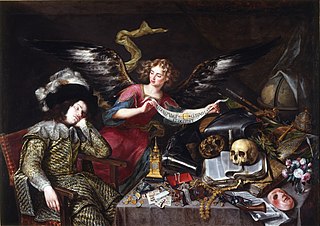
Tourism in Spain is the third major contributor to national economic life after the industrial and the business/banking sectors, contributing about 10–11% of Spain's GDP. Ever since the 1960s and 1970s, the country has been a popular destination for summer holidays, especially with large numbers of tourists from the United Kingdom, Ireland, France, Germany, Italy, the Benelux, and the United States, among others. Accordingly, Spain's foreign tourist industry has grown into the second-biggest in the world.

The Prado Museum, officially known as Museo Nacional del Prado, is the main Spanish national art museum, located in central Madrid. It is widely considered to have one of the world's finest collections of European art, dating from the 12th century to the early 20th century, based on the former Spanish Royal Collection, and the single best collection of Spanish art. Founded as a museum of paintings and sculpture in 1819, it also contains important collections of other types of works. The Prado Museum is one of the most visited sites in the world, and it is considered one of the greatest art museums in the world. The numerous works by Francisco Goya, the single most extensively represented artist, as well as by Hieronymus Bosch, El Greco, Peter Paul Rubens, Titian, and Diego Velázquez, are some of the highlights of the collection.

Torralba and Ambrona are two paleontological and archaeological sites that correspond to various fossiliferous levels with Acheulean lithic industry associated, at least about 350,000 years old. From these sites have been obtained fossils of large mammals, mainly elephants, with remains of nearly fifty individuals from each site, in addition to large bovines and horses. A type training model elephants' graveyard has been proposed, similar to the current Africans. They also show evidence of successive occupations by human beings, such as hunting station or, more likely, carrion and quartering. The sites, traditionally studied together, are about 3 km distant, and belong to the towns of Ambrona and Torralba del Moral.

The National Archaeological Museum is a museum in Madrid, Spain. It is located on Calle de Serrano beside the Plaza de Colón, sharing its building with the National Library of Spain.
Joaquín Rubio y Muñoz was a Spanish lawyer who was a noted antiquarian and numismatist in the city of Cádiz, Spain. He built up a library of manuscripts and rare books and in particular was known for his extensive collection of ancient coins and medals, many of which are now in museums in Spain and Denmark.

Antonio de Pereda y Salgado was a Spanish Baroque-era painter, best known for his still lifes.

The Treasure of Villena is one of the greatest hoard finds of gold of the European Bronze Age. It comprises 59 objects made of gold, silver, iron and amber with a total weight of almost 10 kilograms, 9 of them of 23.5 karat gold. This makes it the most important find of prehistoric gold in the Iberian Peninsula and second in Europe, just behind that from the Royal Graves in Mycenae, Greece.

The Salón de Reinos or salón grande is a 17th-century building in Madrid, originally a wing of the Buen Retiro Palace. The Salón de Reinos and the Casón del Buen Retiro are the only survivors of the original grand scheme of the palace. Built between 1630 and 1635, the Hall of Realms housed the largest paintings in the royal collection, now all in the Museo del Prado. It is named after its paintings of the coats of arms of the 24 kingdoms which formed the Kingdom of Spain at the time of Philip IV of Spain.

The Archeological Museum of Seville is a museum in Seville, southern Spain, housed in the Pabellón del Renacimiento, one of the pavilions designed by the architect Aníbal González. These pavilions at the Plaza de España were created for the Ibero-American Exposition of 1929.

The Museum of Romanticism is a State-owned art museum located in Madrid, Spain. It was inaugurated in 1924 as Museo Romántico.

The Lázaro Galdiano Museum is a museum located in Madrid, Spain. It houses the art collection of José Lázaro Galdiano. The museum was inaugurated on 27 January 1951.

The Carmen Thyssen Museum is an art museum in the Spanish city Málaga. The main focus of the museum is 19th-century Spanish painting, predominantly Andalusian, based on the collection of Carmen Cervera, fifth wife of Baron Hans Heinrich Thyssen-Bornemisza.

Enrique de Aguilera y Gamboa, 17th Marquis of Cerralbo, was a Spanish archaeologist and a Carlist politician.
Alexandre-Mathieu Sureda Chappron was a Spanish architect. He worked under the name Alejandro Sureda and is considered "the main populariser of French architectural models amongst the Spanish aristocracy".

Marian Lopez Fernandez-Cao is a Spanish university professor, curator and researcher, specializing in art, feminism, art therapy and social inclusion. Since 1992 she has been a professor in the Universidad Complutense of Madrid, and is expert on the artist Sonia Delaunay.
The following is a timeline of the history of the city of Badajoz, Spain.
Miguel Ángel Campano Mendaza was a Spanish painter who was critically acclaimed as part of the "generation of the renewal of Spanish painting", receiving, among other prizes, the National Award for Plastic Arts in 1996.





















